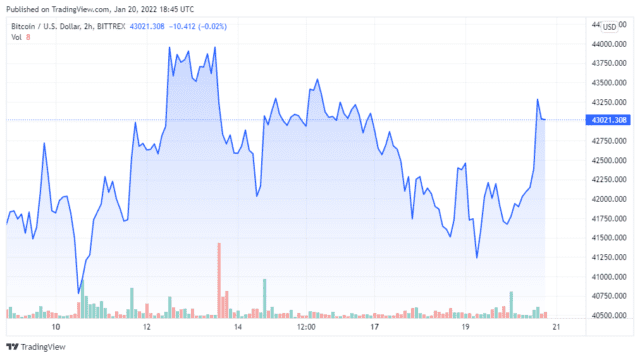Today, Proof-Of-Work mining’s environmental impact is the topic at hand in the U.S. Congress. The House Energy and Commerce Committee is probably debating the subject right this minute. Will they use sources from both sides of the debate or will they rely on the sensationalist reports that have the world up in arms? Can we trust the U.S. lawmakers to do their due diligence and explore the topic with the depth it deserves?
To lend them a hand, Coin Metrics and Castle Island Ventures’ Nic Carter wrote a whole article and published it on mainstream media. Carter took upon himself the duty of defending Proof-Of-Work mining from baseless claims, and unjust media portrayal. He’s done so for years, and he has the receipts that prove Proof-Of-Work mining is one of the world’s cleanest industries.
Yes, it does consume energy, but it also brings a lot to the table. Let’s explore what Carter thinks U.S lawmakers should know before getting into that room.
Proof-Of-Work Mining, “America’s Most Misunderstood Industry”
First of all, right now, Bitcoin tends to use the excess energy no one wants. Why is that? Because it’s cheaper. And because Proof-Of-Work mining is a portable affair that can go wherever it’s more profitable. This is something no other industry can claim, and it should be a crucial factor in the debate. Let’s go to Nic Carter for sourced examples:
“Electricity that no one else will pay for is useful, here. This is why many Bitcoin miners have historically located themselves in southwest China, where hydro power had been massively overbuilt and often went unused. It explains the presence of miners in former aluminum smelting plants in hydro-rich Upstate New York. Miners have also identified fallow energy resources in British Columbia, built for the now-departed paper and pulp industries. And there is today a huge influx of miners into West Texas, where a wind and solar boom has created a massive overabundance of energy.”
Related Reading | Bank of Canada: Proof-of-Work Beats Alternative Consensus Systems
Not only that, Proof-Of-Work mining can fund all kinds of green energy initiatives, and finance infrastructure. Plus, it can “rescue the economics” of already in play sustainable energy power sources.
“Bitcoin miners are attracted to the cheap power—they are willing to scoop up the stranded power and rescue the economics of wind and solar installations that might otherwise be uneconomical.”
It’s incredible, but, Proof-Of-Work mining critics don’t understand this fact. With humanity’s current technology, electricity can only travel so far. If the population around a power source doesn’t consume it, that electricity is wasted. And that happens all over the world, every day. Let’s go to Carter for some U.S. specific examples:
“Electricity infrastructure is geographically constrained, and pockets of free negatively priced energy routinely emerge on the grid. Over the last decade, negative prices—a signal of energy overabundance—have become much more common, particularly in the windy vertical corridor stretching from Texas to the Dakotas.”
Luckily, Bitcoin fixes this.
BTC price chart for 01/20/2022 on Bittrex | Source: BTC/USD on TradingView.com
Quick Facts About Bitcoin Mining
- Currently, it “consumes approximately 0.55 percent of global electricity production.” Nothing to write home about.
- For comparison, “It consumes the rough equivalent of the energy associated with running domestic tumble driers in the U.S. alone.”
- And take into account that Proof-Of-Work miners “can operate practically anywhere: One can mine with a meager amount of data, so 4G or satellite internet work just fine.”
- Also, “miners can migrate practically anywhere, and can locate their operations in rural locations where energy is abundant and underutilized.”
- Why is that important? Well, Proof-Of-Work “miners are building out high-voltage energy infrastructures at locations on the grid where electricity is abundant and demand is low.”
- Why is that good? Well, “If a miner is buying energy that no one else wants, he is actually fortifying the grid.”
Other Advantages Proof-Of-Work Mining Provides
The fact of the matter is that Proof-Of-Work “miners can tolerate interruption without significantly impairing their operations, they can provide services to the grid that few other sources of energy demand can.” This characteristic is as important and as rare as the portability. What other industry can claim to be able to turn off the equipment at the drop of a hat?
“Normally, grid operators have to keep fast-reacting natural gas power plants in reserve in order to backstop unreliable wind and solar. But with flexible load in the form of Bitcoin mining, these operators have a new tool: They can simply ask miners to reduce their consumption to offset a loss of supply—and miners gladly do, within seconds.”
Related Reading | European Markets Regulator Urges The EU To Ban Proof-of-Work Bitcoin Mining
Another hard truth that U.S lawmakers have to face is that “Ultimately, policymakers do not get to decide whether Bitcoin mining occurs or does not occur. It will happen regardless, as long as the market continues to value Bitcoin.” What they can do is to control where it happens, by facilitating the conditions for it to happen. This is a Billion dollar industry we’re talking about here. One that brings a lot of previously unthinkable advantages to the table.
“For the sake of Bitcoin’s emissions impact, we should be thankful that China banned the practice and Kazakhstan is pushing it away, rewarding cleaner miners based in North America. However, policymakers in the U.S. could squander their advantage by making it more difficult to mine domestically. If they do, miners will flow back overseas to more carbon-intense locales where mining occurs.”
Lawmakers should think long and hard about this situation. The future of their countries could depend on it.
Featured Image by Ian Hutchinson on Unsplash | Charts by TradingView


